How to Pick the Best Hay to Feed Goats
You know the old saying, the key to a man is through his stomach? Well, I think it’s even truer with our homesteading animals. The key to healthy and productive livestock is in the food you give them, and this all starts with the basics, such as the best hay to feed goats.
How to raise dairy goats that have amazing milk production all depends on the food you feed them. Let’s go over the basics of what is good and what is best when it comes to hay and feed.
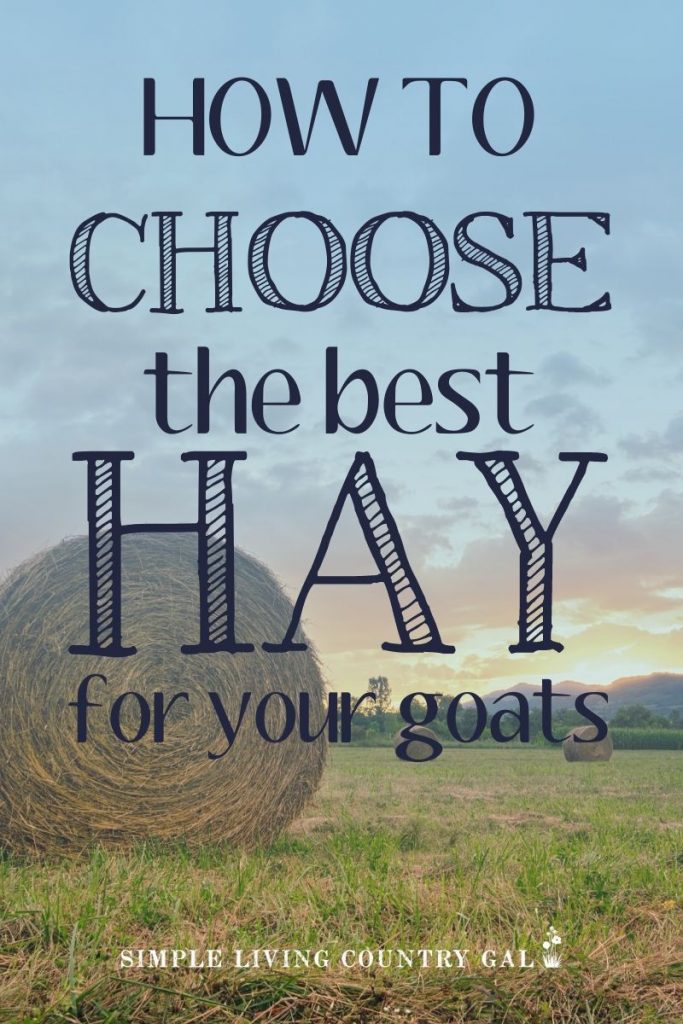
When I first started raising goats, I thought all hay was alike. It was just hay after all, how could one cut be any different from another?
There are so many things to know about hay, from growing it to cutting it, drying it, and finally storing it. There are also different types of hay available, and each contains its own nutrition.
Finally, the time of year hay is baled is one of the most differentiating factors when it comes to quality. In the beginning, I was completely unaware that any of these steps played a role in the quality of the hay when it came to my dairy goats.
Yes, it can seem overwhelming at first, especially when there are so many aspects to what makes a good quality bale of hay. The trick is to know the process of how hay is grown, what steps are taken to get it into a bale, and finally, the best way to store it that will keep its value. If you know those things you will not only provide your goats with a healthy diet but you will save your homestead money as well.
Heads up: This article may be a bit boring to read, but it is one of those important parts of homesteading that needs to be understood from start to finish. So grab yourself a cup of coffee and maybe a pen and paper for a few notes and let’s dive in.
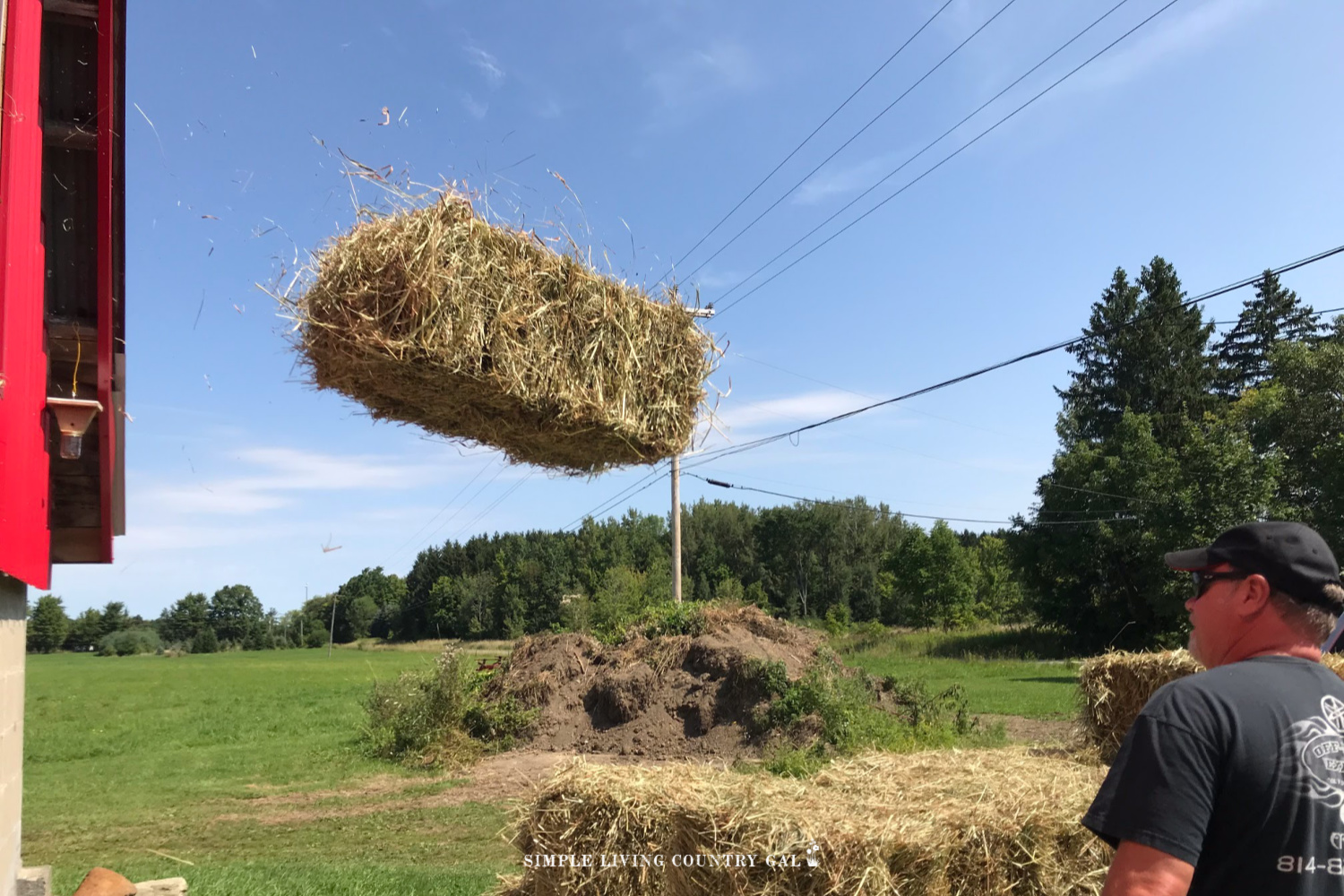
How does a goat eat?
Goats are a lot like deer and tend to forage more than graze. This means they pick and choose the best parts of a pasture. They like to graze often throughout the day, going for weeds and leafy plants before turning to grasses. Contrary to the old saying, a goat will eat anything, even a tin can; most goats are, in fact, picky eaters. This explains why a goat owner’s pasture is hit and miss as to what is eaten down and what is left standing.
A goat’s rumen is found on the left side of the body. You can more easily remember this by saying Left=Lunch. A large soft and spongy left belly is a sign of a healthy and active rumen.
SLCG PRO TIP: If your goat has a large belly that is hard to the touch, that could be a sign of bloat. Bloat is a deadly condition in goats where gas becomes trapped in the rumen. If you suspect bloat, walk your goat to help them remove the excess gas, and contact your VET immediately for medical assistance.
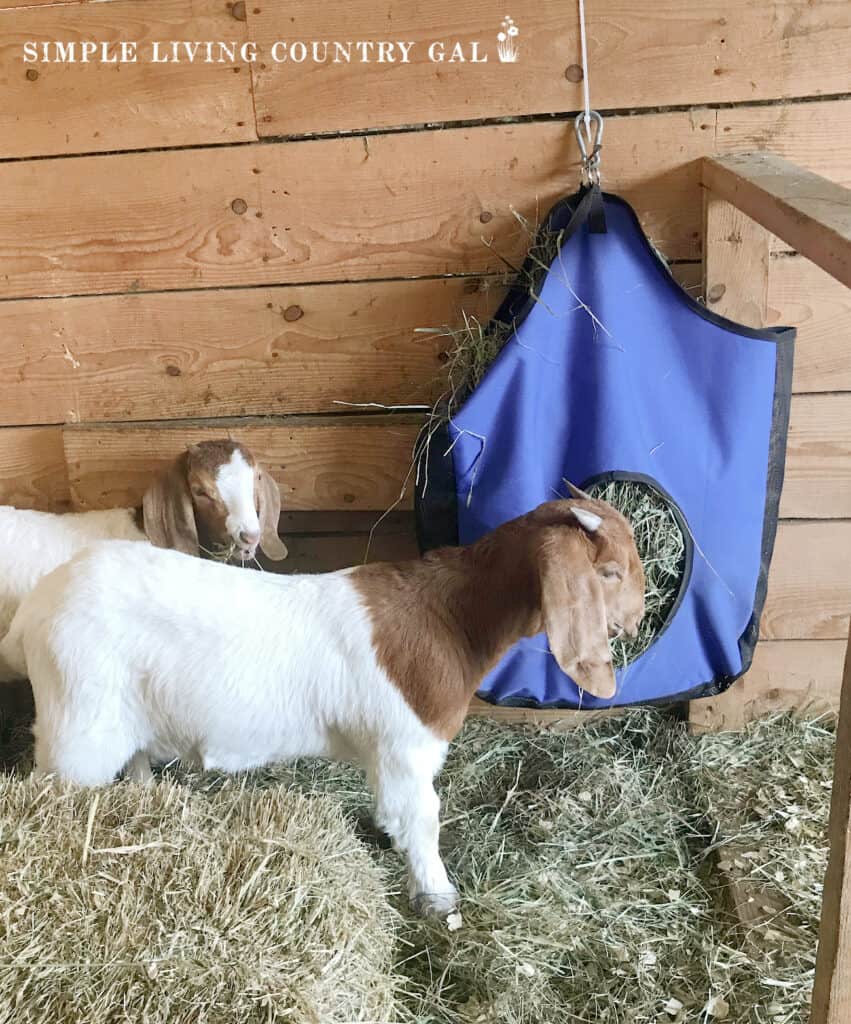
First, the basics, what exactly is hay?
You may have heard the terms hay and straw used interchangeably in a conversation, even though they are two different things.
Here is a basic overview.
- Hay is used for feeding animals because it contains the entire plant; the stem, leaf, and seed head. The nutritional value is found in all of the parts of the plant, so it is important that only hay is used for feeding livestock.
- Straw, on the other hand, is used more in gardening and landscaping because it does not contain the seeds of the plant. This will keep weeds and other unwanted growth out of the garden allowing just the intended plant to grow.
SLCG PRO TIP: Straw is great to use for goat bedding. Since goats will not eat straw because they prefer hay, you can reduce worm outbreaks by limiting how often goats eat discarded hay off the soiled ground.
What are the different types of hay for goats?
There are three different types of hay, Grass, Legume, and Cereal Grain.
- Grass Hay can be timothy, orchard grass, or other types of grass or broom grass.
- Legume includes alfalfa, clover, or soy.
- Cereal Grain includes oat and barley.
Hay is regional, and that means the names of the grasses will change depending on the location in which you live. Where we live, in Northwestern PA, Timothy grass hay is the most commonly found along with orchard grass.
Hay is what we call a cut pasture, and as stated above, it includes the stem, leaves, and seed head. This is usually cut fresh, left out to dry for a day or two, and finally bailed; giving it the most nutritional value. The main purpose of hay is to feed grazing animals, and for that reason the timing and care at bailing are crucial.
Bailing is simply the process of cutting, raking, combining, and stacking the hay into sections. These can range from small squares to large round bales, and the prices of the bale will depend, of course, on size but also the quality.
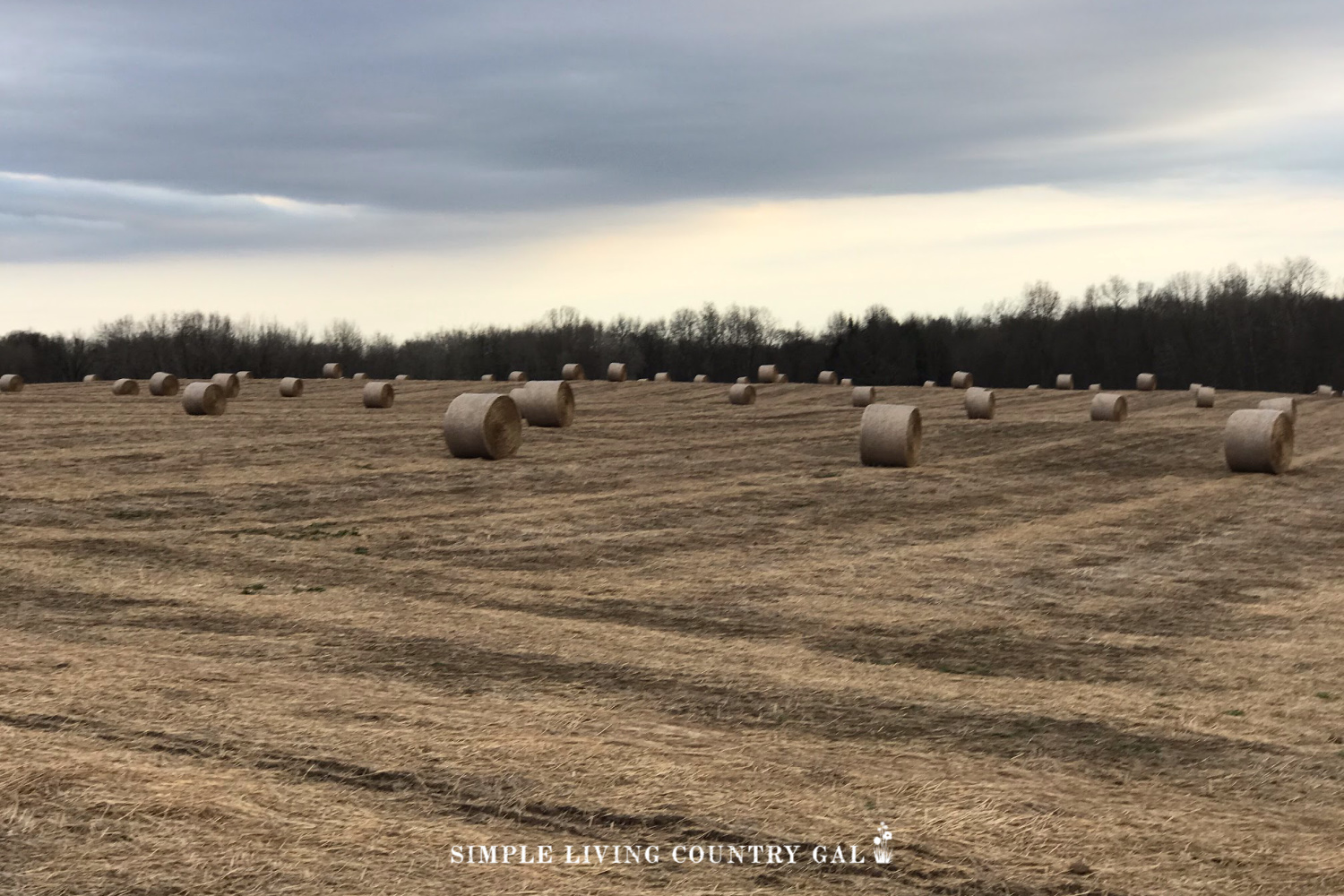
The process of cutting, raking, drying, and then baling hay is important to know so you better understand which questions to ask before purchasing hay for your goats.
How to Bale Hay
Step #1. The Hay is cut
Hay is first cut (mowed) down and then raked into rows. You may have driven by a pasture of neat rows of cut green grass before. These rows are usually cut in the early morning to allow the dew to help hold the leaves of the hay intact with the stems.
Step #2. Leave the hay to dry
The cut hay is left out to dry, usually just that day or a second if needed. It is crucial that excess moisture is removed from the hay to ensure its nutritional integrity.
Step #3. The Hay is then baled
Once the hay has been dried, then the baling process can begin. Usually, machines, called balers, will do the baling. They will gather up the hay, bundle it together, tie it with string, also known as baling twine, and finally toss it into a hay trailer or back onto the grass to be gathered up later.
Step #4. The Hay is ready to Store
Hay is then stored either in a barn or shed, or it can be wrapped with special plastic or a tarp and stored outside. This will all depend on the weather where you live. The key is to keep the hay dry to again ensure the quality of the hay is left intact preserving its nutritional value for your animals.
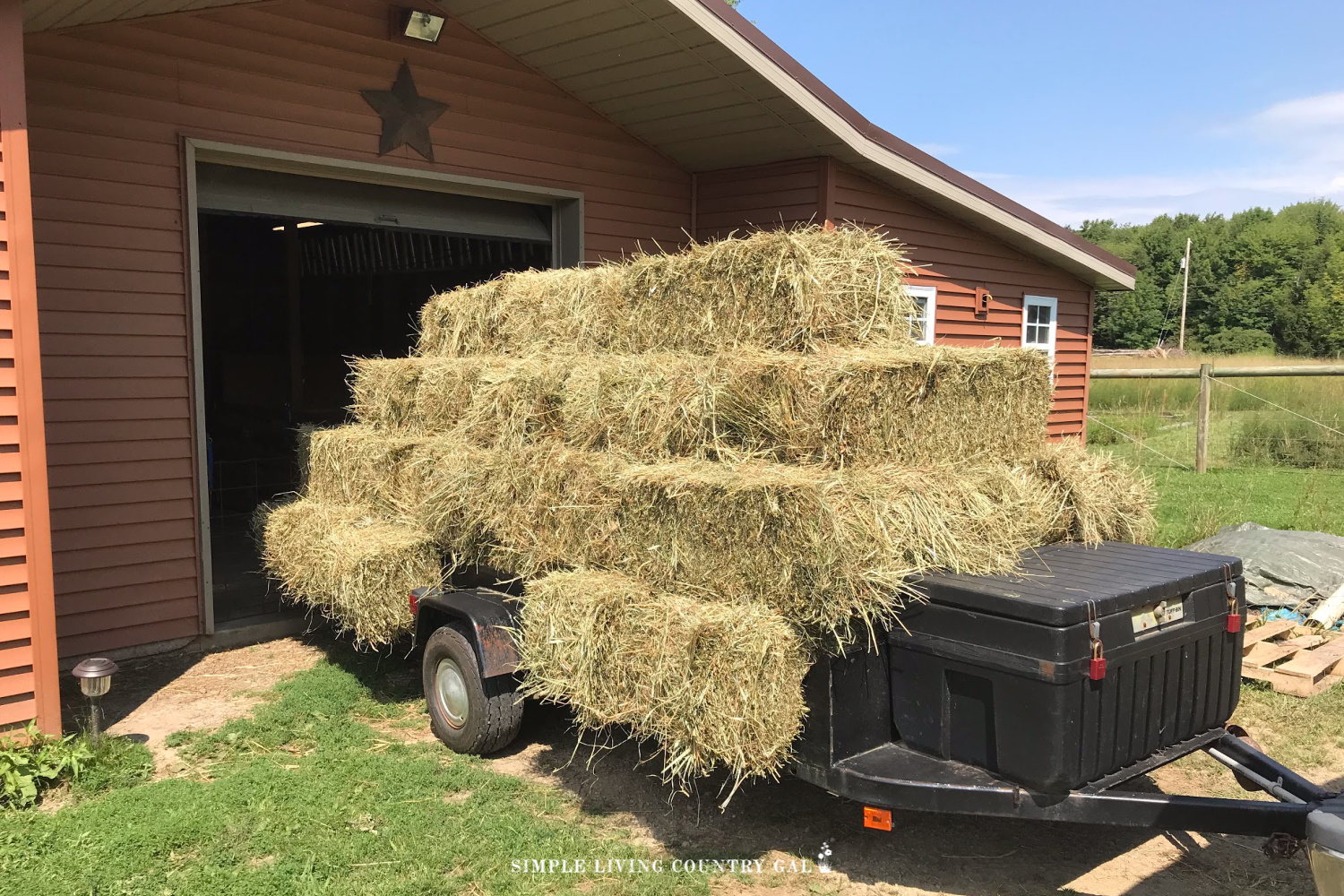
SLCG PRO TIP: Hay must be kept out of the rain to deter spoiling of the hay bale. Moldy hay can not only make your goats sick but even, in some cases, kill, so being sure your bales are stored correctly is a crucial part of a healthy herd.
READ: THE BEST HAY FEEDERS OPTIONS FOR GOATS
Different Cuts of Hay
Know the meaning of the different cuts of hay so you better understand how bales are priced.
First-cut hay
This is the first time the pasture is cut down for baling that season. This is the early spring cutting and tends to be the coarsest of the hay cuttings because of the thicker stems. First-cut hay also has the most weeds and the lowest protein of the common cuts. For this reason, the price for first-cut hay will be lower than later cuts.
Second-cut hay
This is next in quality and has a higher protein and nutritional value than first-cut and also tends to contain fewer weeds. Second-cut hay usually has a softer feel to it and looks greener than first-cut. The smell, too is more fragrant and actually smells like fresh-cut grass. This cut of hay will be more expensive because of the quality and nutritional levels found in the bales.
It is also a bit hard to come by since the amount of second-cut hay all depends on the weather. Hay cannot be cut or mowed in the rain since it needs to be dried before baling. A rainy season usually means less hay, which can drive the price of second-cut pretty high.
For our goats, we prefer to feed second-cut to our goats for reasons I will get into later.
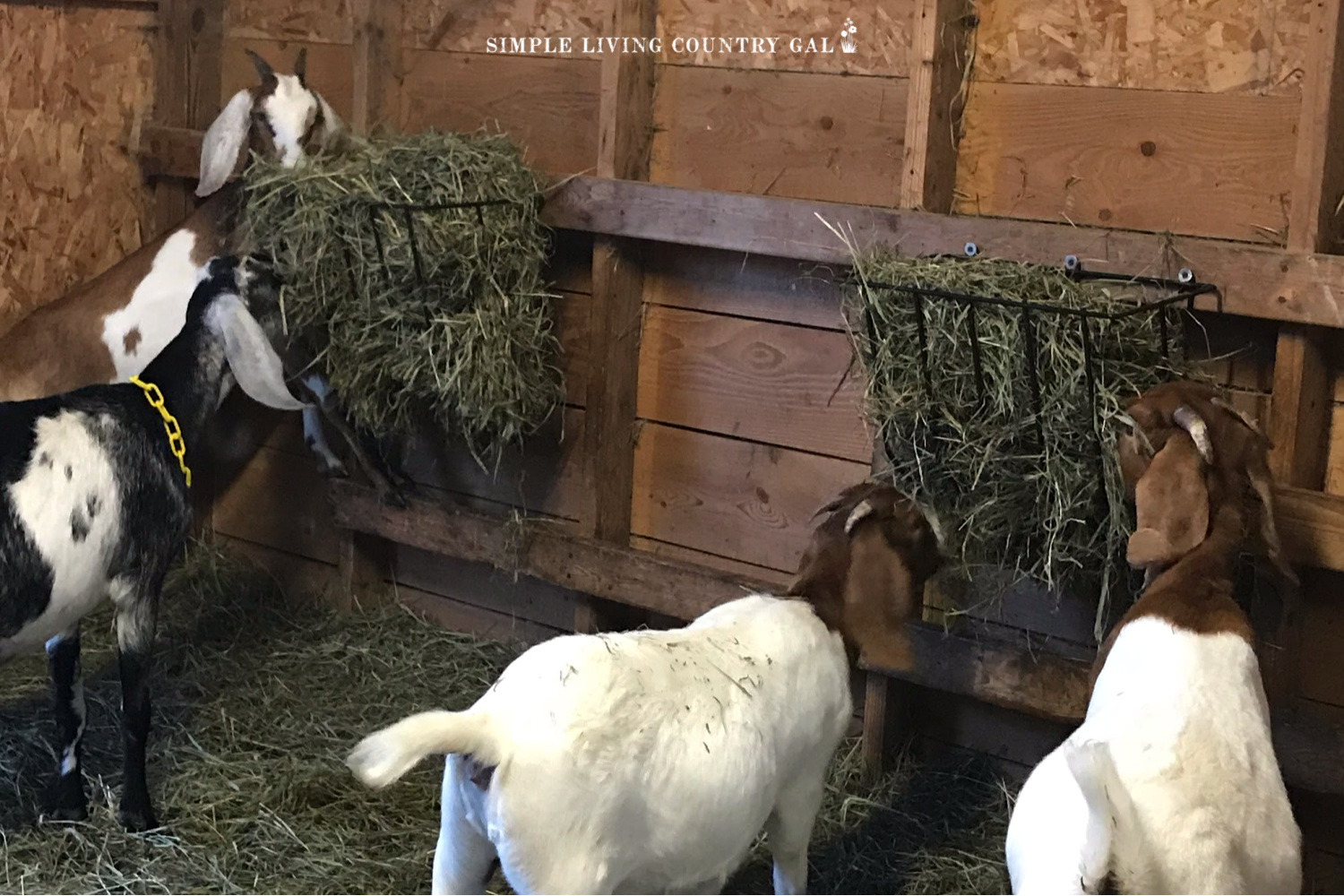
Third-cut hay
This is a less common cut of hay and usually depends on the location and weather where you live to how easy it is to purchase. The price may be higher for these cuts, but the quality will need to be examined before you commit to bringing any third-cut bales home to your goats. Be sure these cuts still include the maturity of growth so you are getting the best quality and protein for your goats. If cut too quickly, these bales will not include the full plant, meaning the stem and leaves, which may have your animals missing out on important nutrients.
SLCG PRO TIP: As with any cut of hay, the amount of dust is also important to consider. Respiratory illness can be common in some animals like horses and goats for example. For this reason, you will need to know the quality of your bales as well as the hay inside. We like to test a bale at home prior to purchasing large amounts for our animals.
What is the Best Hay to Feed Goats?
Feeding goats can be a bit tricky because they have what is known as a complex digestive system. But don’t let this scare you, I just want you to be aware before you begin so you can better understand how to support your goats in the healthiest way.
Let’s break down a goat’s diet so you can see why we want to focus on hay from the beginning.
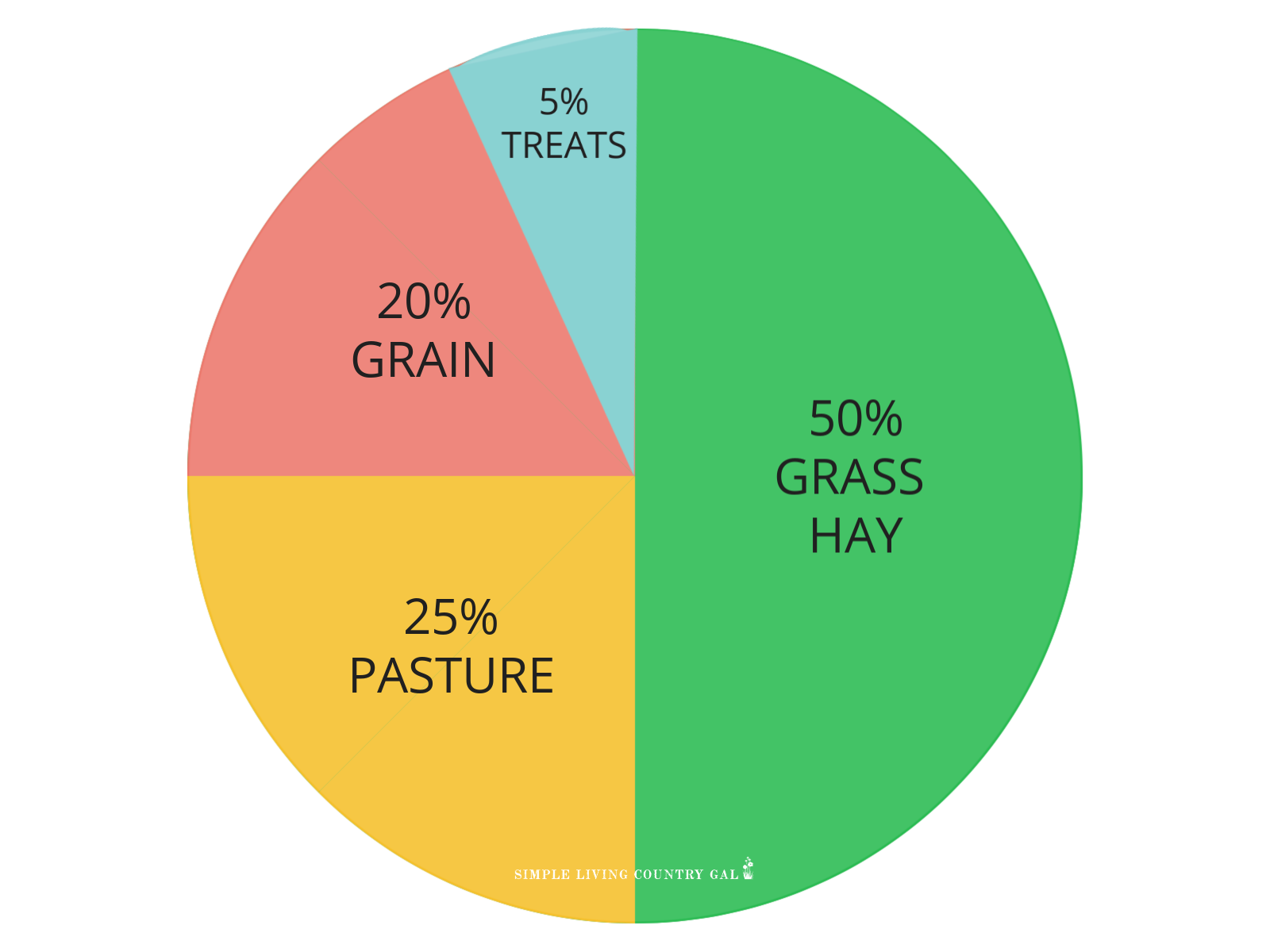
As the graph above shows, hay takes up half of a goat’s daily diet. If you do not have access to pasture for your goats, then the grass hay percentage is going to be a bit higher than the graph above.
Since the largest part of a goat’s diet is grassy hay, that is where we are going to put our focus today, in particular, the first and second-cuts. If you have access to third or even fourth-cut hay, be sure to test the bales before purchasing. Check the size of the stem and the quality of the nutritional value of the hay. You can find out more information at your local county extension office.
SLCG PRO TIP: Did you know that most goats can live their entire life without any supplemental grain? This is especially true for wethers and non-bred does that are already at an ideal weight. This is why the quality of your goat’s hay is so important. Remember to always make any changes in diet gradually so as not to upset the balance of your goat’s rumen.
What is a wether?
A wether is a male goat that was castrated at a young age.
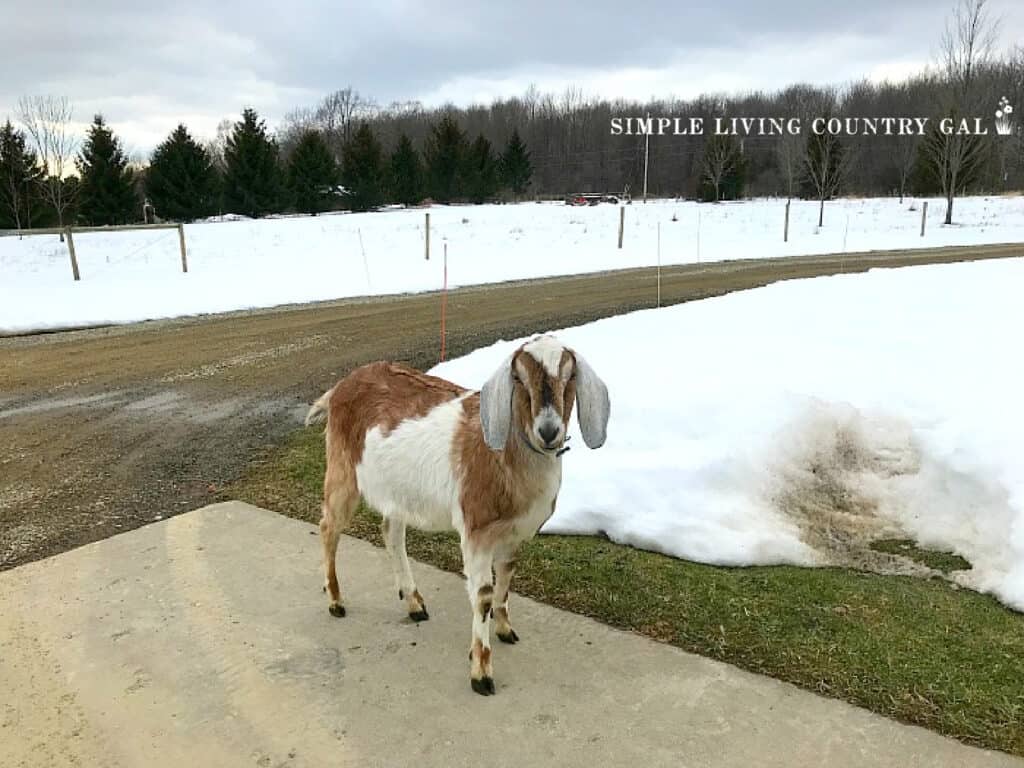
Hay is used as animal fodder, meaning feed for large livestock animals. This will include cattle, horses, goats, llamas, alpacas, and sheep. It is also used for smaller animals such as rabbits. It is important to know the best hay for your specific animals to ensure their overall health, growth, and milk production.
Different livestock requires different types of hay, and knowing the difference will help you to give better feed to your animals. Hay eaters are ruminant animals, and ingesting hay can be used more than to aid nutrition.
Feeding hay to your goats in the winter has an added benefit. When a rumen is working to ferment the hay that was eaten, the rumen acts as a furnace which helps to keep them warm in the cold weather. This can be very beneficial in the colder months of winter.
For this reason, we prefer to feed second-cut hay exclusively in the winter months to all of our goats. Since our goats prefer the second-cut hay, they will eat more that will, in turn, keep their rumens active, giving them a bit more protection when those frigid wind chills hit.
What are the different types of goats?
There are three types of goats. Dairy goats, meat goats, and goats that are strictly for pets or work. Knowing your goats’ main purpose will help you choose the best hay and feed.
The Best Hay for Dairy Goats.
Hay is particularly important if milk production is the main purpose of your goats. The type of hay will directly affect the amount and quality of milk and the percentages of butterfat found within. For that reason, Alfalfa hay is a great choice because of its higher protein amounts.
READ: DAIRY GOAT BREEDS – CHOOSING THE BEST FOR YOUR FARM
Unfortunately, not all regions have access to alfalfa hay. Luckily there are a few options to help remedy this.
If you live in a region like we do that does not have a large supply of alfalfa hay, then you may want to supplement your goats with protein to help.
How to Introduce More Protein to Your Dairy Goat’s Diet
Alfalfa Pellets
Alfalfa pellets are a great option to offer your goats that will give them a good supply of protein. You can offer them free choice or mix them in with their grain.
Since purchasing pellets can be a bit expensive online, I suggest checking with your local feed mill for a more affordable option. Be sure to have a secure way to store this option of livestock feed so pests do not have access to it.
Chaffhaye
Chaffhaye is premium bagged, Non-GMO Alfalfa. It is our preferred method of feeding alfalfa to our herd. This product is manufactured in Texas, but more and more states are carrying it as well. Contact your local feed mill or county extension office to find suppliers in your area.
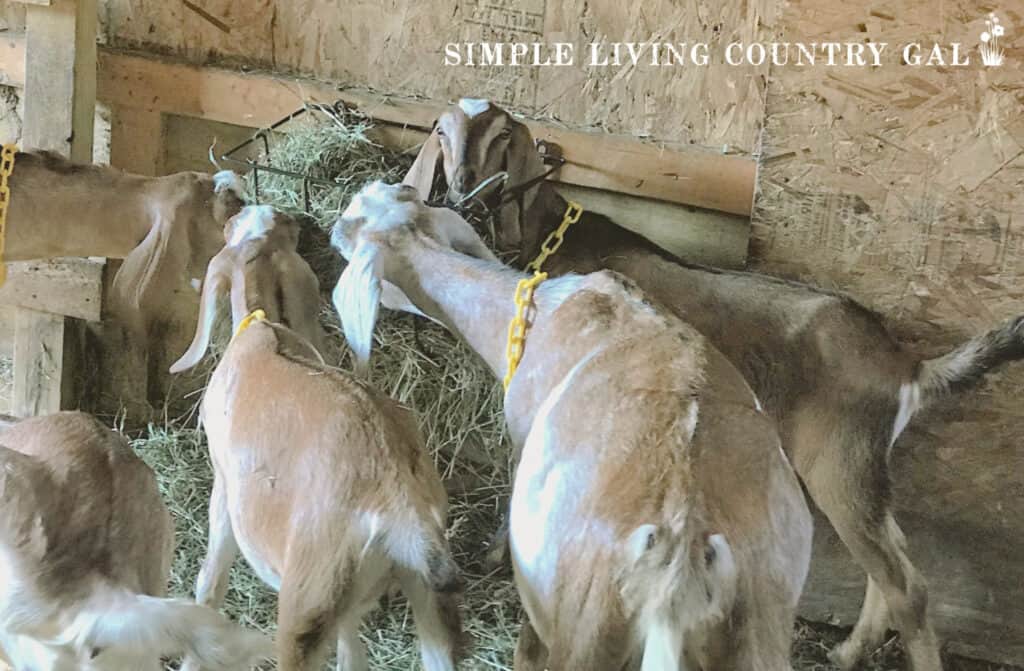
Chaffhaye is a moist, slightly ground alfalfa hay compacted into bags. Once opened, you will need to store it in a container that will help to keep the air out. Do not store it in sunlight or allow it to get warm, or the contents will mold. To know if it is good, go by the smell. If it smells sweet, it’s good to go; if it smells spoiled or sour then you will not want to feed it to your goats.
SLCG PRO TIP: Always check your bags of Chaffhaye before purchasing. If the bag is torn, that means air has entered the bag and will result in a dried-out Chaffhaye. The contents must be moist, so the integrity of the bag is important. Do not hesitate to call the supplier and ask for a replacement if a bag is found open or damaged. They should replace it without question.
Our goats are given Chaffhaye year-round, and they really love the taste of it. Since feeding Chaffhaye, I have found a much healthier and robust herd that is better able to fight off worms on their own, which is commonly found in our very wet climates.
It is always best to promote health daily through diet rather than being forced to treat sick animals.
As I said earlier, for our dairy goats, we prefer to feed second-cut hay. This hay is richer and more nutrient-dense which supports the high energy needed for milk production. Second-cut is also good to give to any goats that are bred. Again encouraging nutrients to support the energy needed by a bred goat.
The Best Hay for Meat Goats.
The purpose of a meat goat is to fill the freezer, and for that reason, you will want to encourage healthy weight gain in your meat goats. More often than not, first-cut will work just fine in this area, but if you find your goats on the low end of the weight scale, you may want to introduce second-cut hay.
Since most goats prefer second-cut to first-cut hay, this will encourage them to eat more and help them to establish a better weight.
More often than not, most meat goats will thrive on first-cut hay as long as the quality is good and the nutrients are intact.
The Best Hay for Pet and Working Goats.
Just like with meat goats, your goal is to make sure your animals are in optimal health. More often than not, this can be easily done with first-cut hay. Again, if you see your goats are on the lighter side, you may want to have a few bales of second cut around. You can either offer second-cut exclusively or add it to your first cut to help promote eating.
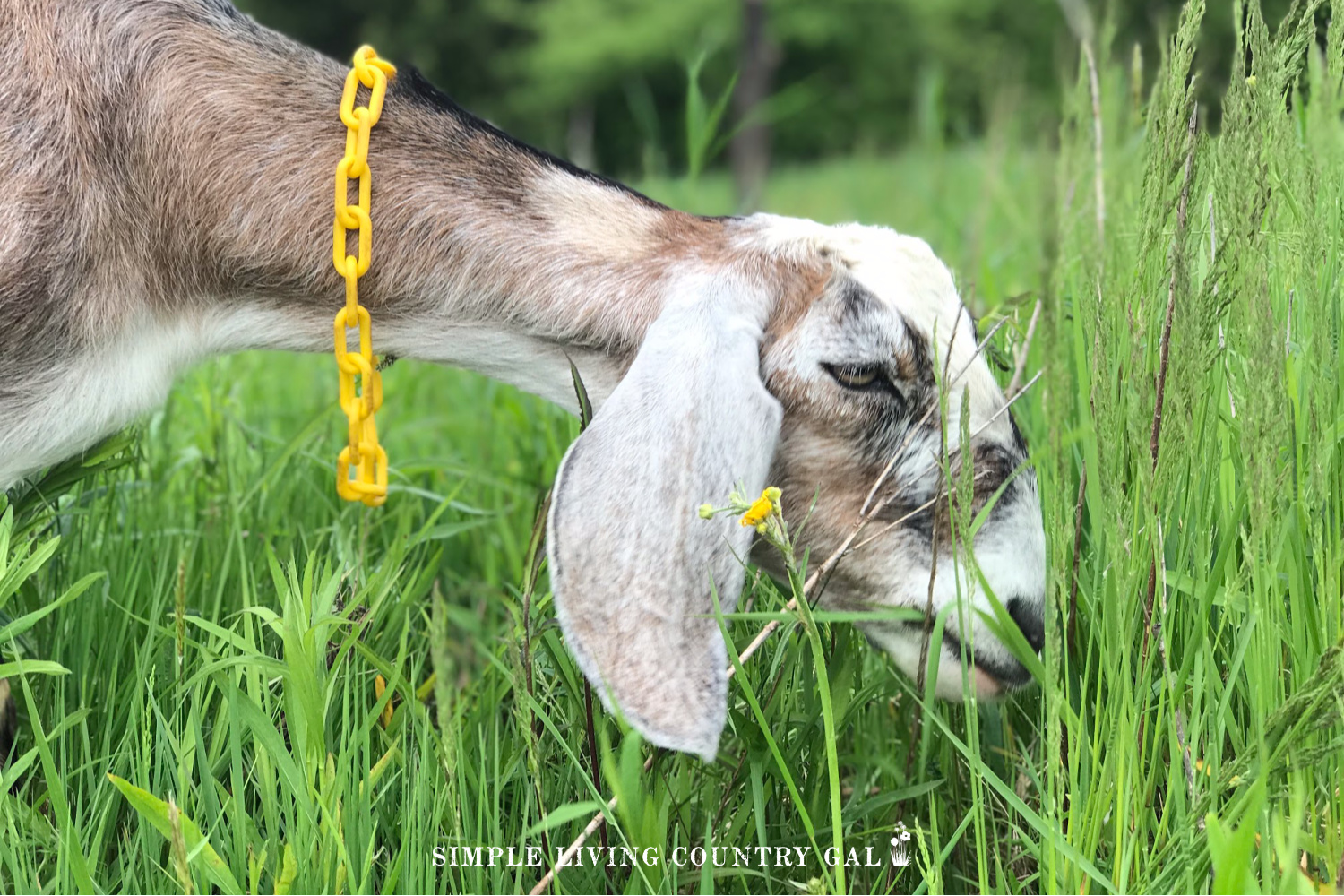
When choosing the best hay for your herd, you will need to factor in a few things. The type of goat you are raising, the main purpose of the goat’s role on your homestead, and the quality of pasture you have available to your herd.
Knowing the different cuts of hay, and the process by which they were grown and baled will allow you to make a wiser investment for the best hay for your goats.
More Goat Care Resources:
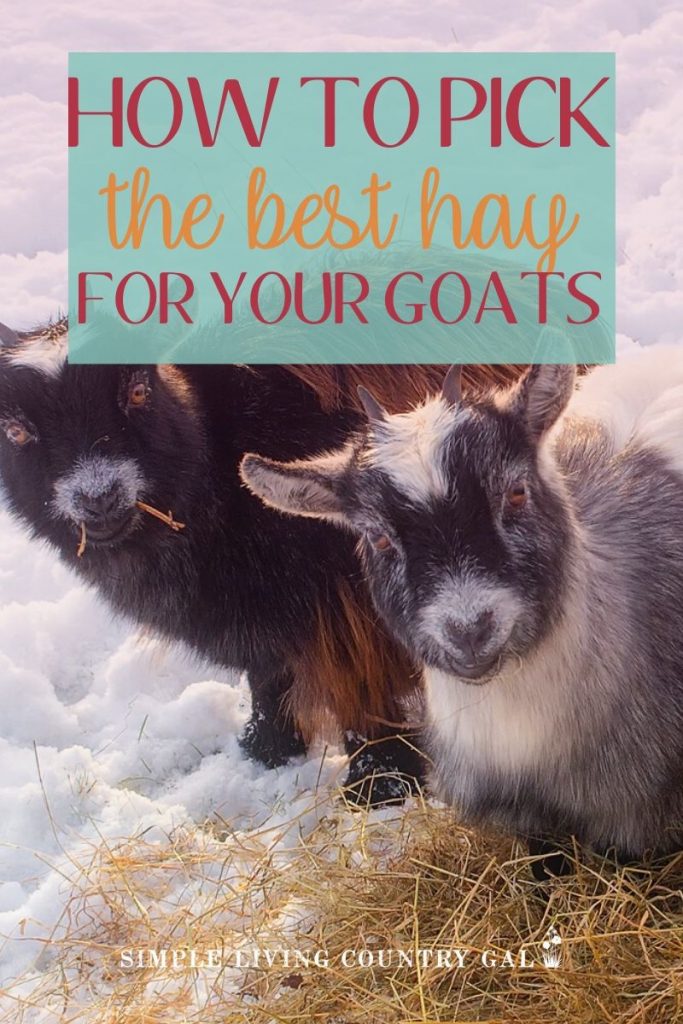

Great article. Interesting read thanks.
Glad you enjoyed it!
Tracy Lynn
Hey Tracy, thanks for an informative article on all things hay. I’ve been in love with hay since I was a kid (no pun intended). I tried growing my own food for a time. It was rewarding but also hard work, and as your article illustrates, not simple at all. Nothing is simpler than hopping in my car and picking up dinner at the supermarket. That’s why everybody does it, I suppose. Just saying. : ))
Yes, I agree, Jon…growing food is hard and being at the mercy of the weather is no walk in the park either. However, when things all work out. When the moon is full and those stars aligned and your garden is just bursting with an amazing rainbow of produce, that is when it is all worth it. Every single bit.
Just saying. 🙂
Thank you for this information. I’m learning how to raise goats before actually doing so and your article in hay was very informative.
Thank you for this!